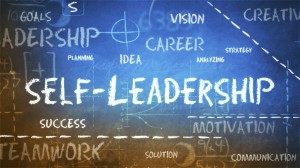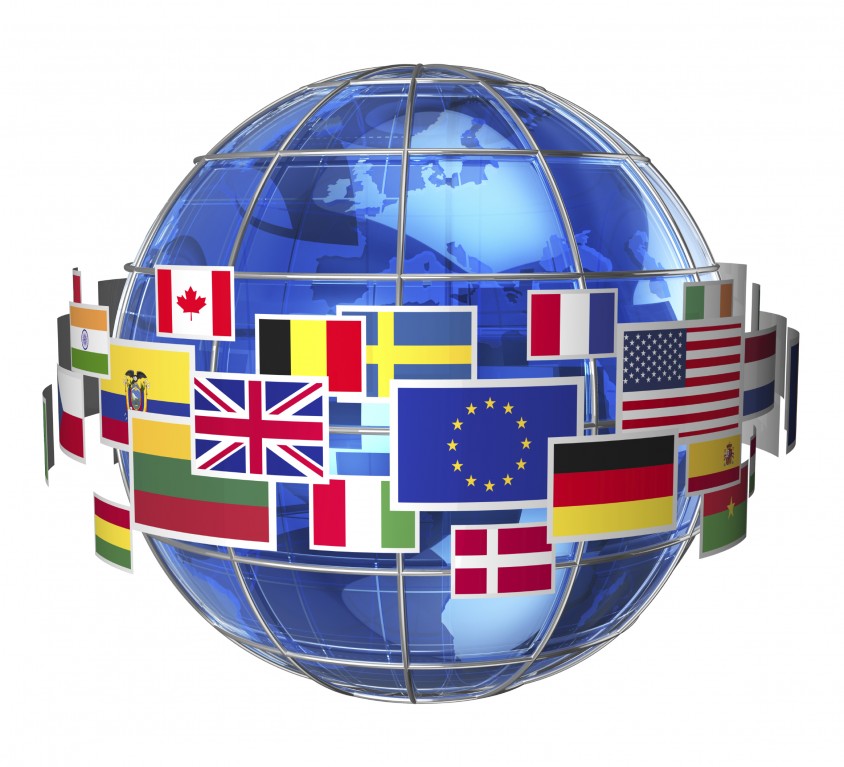“A human being … experiences himself, his thoughts and feelings, as something separate from the rest–a kind of optical illusion of consciousness. This delusion is a kind of prison for us, restricting us to our personal desires and affection for a few persons nearest to us. Our task must be to free ourselves from this prison by widening the circle of understanding and compassion to embrace all living creatures and the whole of nature in its beauty.” – Albert Einstein
Category: Leadership Development
Are you able to let go of your fears?
I just watched an extremely powerful TEDx San Diego talk of Koelle Simpson, the horse whisperer… amazing how she describes her work with horses and draws the parallel to empathy, compassion and mindful leadership. I always heard that learning and working with horses can be a great experience but this talk really brings it to the point: by letting go of your own fears and by simply listening to your intuition and being yourself, people around you will start mirroring what you are doing and and how you are behaving because this is how we are build, neurologically speaking. You always hear “walk the talk” but this TEDx talk, powerfully shows, how true this actually is… Enjoy watching and let me know how you felt!
Jenny
Reality versus Perception: Our Brain at Work
Lately I came across a very nice quote referring to the differences that exist between beliefs and reality:
“The map is not the territory” from Alfred Korzybski
This quote illustrates very nicely that your reality (what you believe is true and objective, thus your ‘world’), is nothing else than an inner representation of the external realities and the world that you are observing and living in. Your perceptions create the “map of the world”. This map helps you navigate in the “real world”, through daily experiences and impressions. Like a road map it gives you landmarks for moving forward towards your destination and various codes and rules let you interpret and understand what is happening, what you can do and what you cannot.
Thus, there is “your” reality (the map) and the outside world (the territory) and there will always be differences between the two. Our human brain notices what is happening around us (in the territory) through our senses and then proceeds to filtering the received information in order to be able to use them and not to create an ‘overflow’ of stimuli.
Let me give you an example: Imagine your manager comes in and sees you sitting at your desk which is overflowing with paper and other things. He or she simply says: “You have a full desk”. Depending on your background, education, culture, previous experiences etc. you might be thinking: “Oh, he/she said that I am not organized”; or you might think something like “Oh, he/she notices that I have a lot on my plate” or anything in between. There are many different ways of interpreting what has been said and whatever you might have understood will trigger your reactions and your thoughts after that. Somebody observing the scene on the other hand, might interpret something completely different as he/she would have a very different view on the world. So, what is “real” and what not?
As you can see, there is only one situation happened: one territory. The possible representation hereof (the maps) however, i.e. how people perceive this situation can have many different facets and aspects.
Next time you find yourself in a difficult situation, you might want to think about what “really” happened (the facts) and what your interpretation, your judgment and your subjective view of the event was. You might even want to seek clarification from the person involved in the action clearly asking what was meant (if at all possible). The important thing to remember here is that you choose how you react and if at all… opening up to what really happened and what you saw, heard, felt, might help you change your behavior over time, which will in turn change the way others react upon you.
Thanks for reading! Jenny
Teaching in an intercultural context
Two days of teaching international marketing for Master’s students from all over the world in Caen have made me realise important things:
- Being able to share my experience with the next generation of international managers is fantastic and I find, very rewarding;
- Seeing different cultures respond differently to cases, questions etc. is always a great learning and extremely enriching;
- Through education we can ensure that people view each other with different eyes. Once returned to their home countries, these impressions and learnings will stay and shape the quality of their future relationships.
Thank you to my students for a great time, and all the best for the future! Jenny
Social Networking and Cross-Cultural Competence
If you look at the stats below, you get a sense of understanding how important social networks have become in our lives. Interestingly, even more ‘private’ topics such as politics and religion are being discussed, even more so in countries like Tunisia, Jordan or Egypt.
Knowing how to build communities and to nurture them; more importantly, how to communicate across cultures and borders becomes an essential skill in today’s connected world. Relationships are becoming more complex as often people communicating with each other don’t necessarily have the opportunity to see themselves.
But: as I wrote in an earlier post about the components of communication, 55% of the non-verbal aspects actually contribute to the understanding of what your counterpart is saying and 38% of the paraverbal. Hence, when communicating in social networks where usually you cannot see your discussion partner, the tone of your message, character fonts, drawings, diagrams, colours, italics or highlights are extremely important.
Understanding your target audience and their culture plus choosing the right tone and message is a must when building relationships in the business world but also privately.
I am extremely happy to be able to speak about this exciting subject in London on the 21st of February. Looking forward to seeing you there and if not, please stay tuned as we will be setting up tailored webinars to follow-up on the conference around three major topics:
- Social networking across cultures and platforms
- How to use social media effectively across cultures for Internationalization, Marketing and Strategic Communication
- Using Social Media for Community Management
Jenny
Evening thoughts…
Without a global revolution in the sphere of human consciousness,
nothing will change for the better in the sphere of our being as humans,
and the catastrophe towards which this world is headed – be it ecological,
social, demographic or a general breakdown of civilization – will be unavoidable. The salvation of this human world lies nowhere else
than in the human heart, in the human power to reflect,
in human meekness and in human responsibility. – Vaclav Havel, President of Czech Republic in his address to the U.S. Congress
Diversity not Always Leads to Innovation and Creativity: The Damaging Effects of Indirect Cultural Disharmony
See on Scoop.it – Mindful Leadership & Intercultural Communication
Organizations strive to be innovative and creative. For that reason, they invest in diversity management, because innovation and creativity can be increased through diversity.
I completely agree! Diversity has to be actively managed to be able to harvest its benefits such as more creativity and innovation…
See on ingostolz.wordpress.com
7 main catalysts that impact people’s work
Today, I would like to introduce you to 7 catalysts that – according to T. Amabile and S. Kramer – have a major impact on people’s emotions, perceptions and motivations as well as on the particular tasks they are performing. These catalysts are certainly not new to you, but I thought that spelling them out again and listing them here would certainly help you remember what makes people thrill, especially when you are leading a team/teams.
1) Setting clear goals: people need to know where they are heading and setting up milestones along the way, will make them feel the progress on the way
2) Allowing autonomy: Stimulate people’s creativity and intrinsic motivation by providing them the freedom – to a certain extent – of taking decisions themselves.
3) Providing resources: All successful projects need the right resources; many times, I have seen the attainment of goals fail as access to adequate resources was not given or hindered.
4) Giving enough time: Studies have indeed shown that no pressure and too much pressure over time are both hampering achievement. You don’t want your employees to be burnt out, but you don’t want them to be bored either; low to moderate time pressure seems to be the optimum here.
5) Help: In today’s complex and matrixed organizations, people need help from various colleagues as they cannot possible know everything that is needed for the successful completion of a task, project or program.
6) Learning from problems and success: If your organization has a ‘safe’ climate and culture, people will take risks and be innovative. Set-backs need to be openly analyzed whereas successes – even small ones – celebrated.
7) Allowing ideas to flow: Mindfully listen to what your employees are saying, engage in dialogue and encourage discussions/debates. Truly creative ideas will come out and people will feel extremely motivated as they are perceiving that they are an active part of the progress on the path to successful accomplishment.
It sounds easier than it is, I agree! Maybe you want to print this out and pin it over your desk so that you can see it everyday… sometimes, the most simple things are those with the strongest impact!
Jenny

Brussels – A Cultural Potpourri
During this holiday season, I had the pleasure of going home again. To those of you who are following this blog on a regular basis, you might know that ‘home’ for me is quite an interesting term. Usually, I use it for Brussels, the town where I grew up in and where I still feel very attached to.
For the first time in a while, I noticed something new when listening to the people in the streets, restaurants and other locations where crowds meet: even more languages than ever before. More worrying for me: I was not even able to recognize some of them, hence would not be able to say from which country the people speaking them would come from.
Since I lived there, many things have indeed changed in Europe’s capital. Not only have the member states passed from 12 at the time to 28 today which means a huge organization when it comes to elections; We now also have a single currency in 18 member states meaning that you don’t need to change money anymore when crossing the border… I still remember the times and even the exchange rates between the countries when this was not the case: what a complicated undertaking! I also remember having to show passports at borders and the need to explain what my different grades were worth in various countries to have the right to study there as no credit system existed at the time…. Wow, either I am getting old or things change fast 😉
What also struck me over the holidays was the fact that all these different people with different habits, worldviews, behaviors are living and working together in one city, bringing their own traditions, norms and values with them. What a colorful potpourri of people and truly something making the heart of a European Intercultural Chameleon like me beat faster. How enriching those encounters are but how full of problems and misunderstandings they can be if not lived and accepted with patience and a non-judging and open attitude.
2014 begins in the heart of Europe for me and who knows where my intercultural and mindful path will lead me this year. Maybe to you! Don’t hesitate to contact me if your teams are not working well together or you need to understand what motivates people from a different culture to become more efficient. My up-bringing and years of experience coupled with various languages and other skills will surely be able to bring you further on your path. Looking very much forward to it!
Jenny








